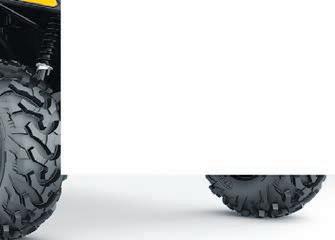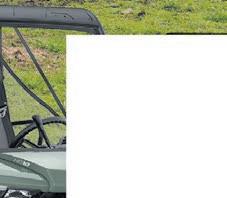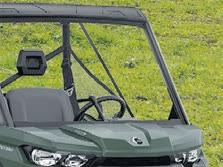

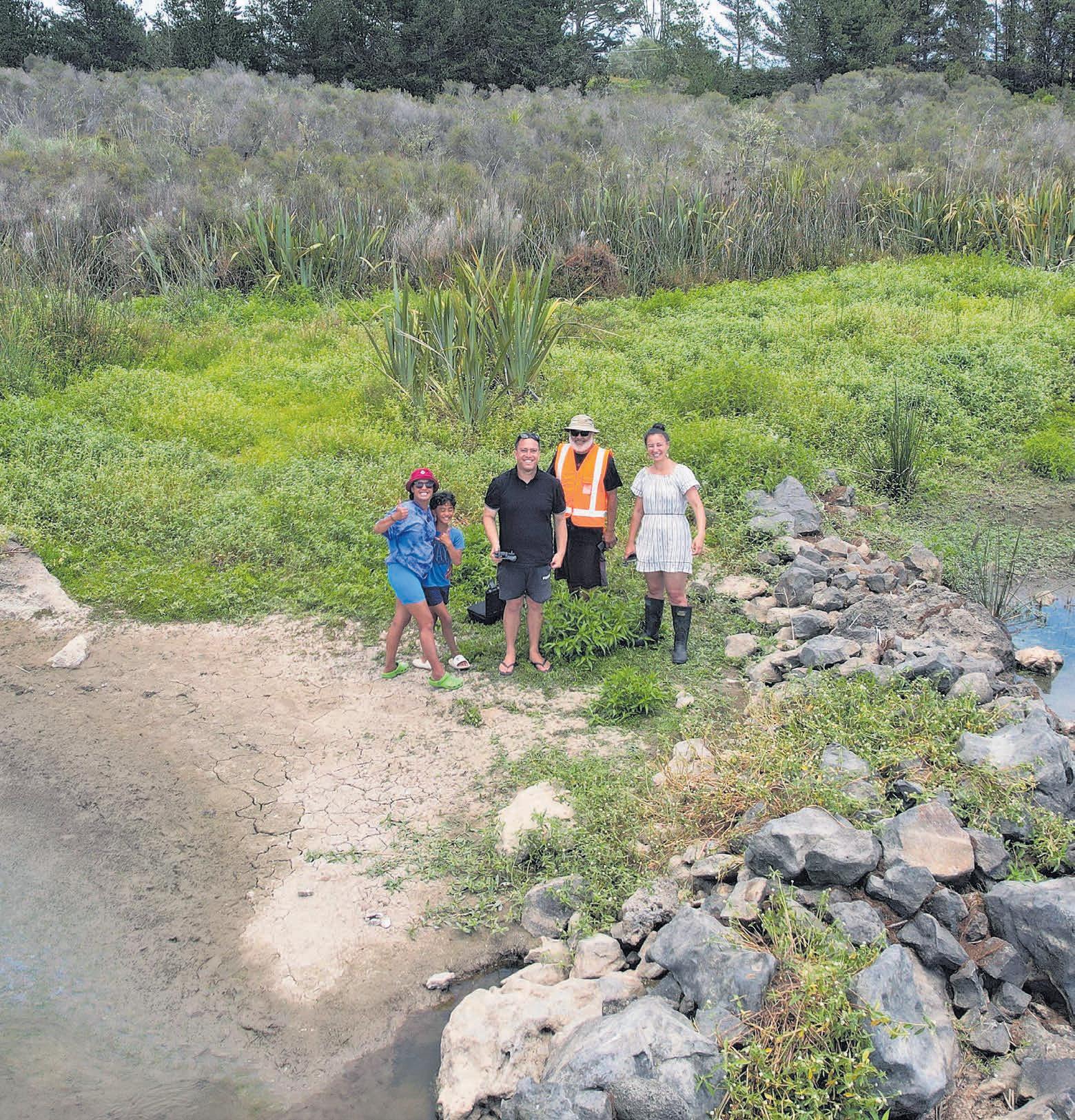
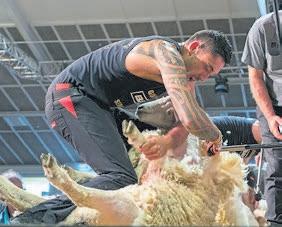
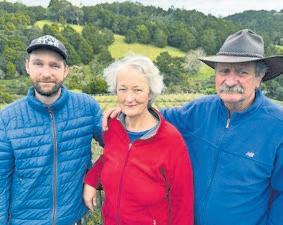
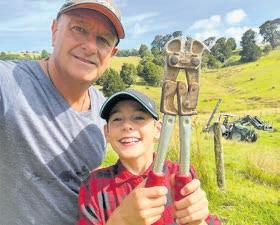







by Grant McCallum, MP for Northland
I am excited about the National-led coalition’s commitment to the Northern Expressway’s four-lane extension to Whangārei.
Phone: 0800 466 793 Email: info@integrity.nz
Postal Address: PO Box 474, Dargaville Physical Address: 107 River Road, Dargaville
Publisher: Allan Mortensen 021 439 697 allan.mortensen@integrity.nz
Journalists: Amy Fifita | Andy Bryenton | Paul Campbell
Advertising: Donna Eves 027 525 8223 | Shauna Sutton 027 343 1367
Production: Gavin Bainbridge | Marnie Fuller | Drew Welsh | Liz Clark
Accounts: accounts@integrity.nz
Distribution: Laurie Willetts Printed by: NZME
Website: farminglifestyles.co.nz
19,445 copies DELIVERED FREE to every farm and rural delivery address from Albany to Cape Reinga.










































































This extension is vital, especially considering the frequent closures of the Brynderwyns, and Dome Valley being one of New Zealand’s most dangerous road stretches.
The planned route will bypass the Brynderwyns and include two tunnels under Dome Valley, significantly impacting our region’s economic growth. A report forecasts that the new expressway will contribute $1.2 billion to the country’s GDP. Also, good news is that there is strong interest from companies and consortia to construct the road for us.
Given these developments, I was surprised to encounter opposition. Both the Labour and Green parties have questioned the project’s economic viability. A spokesperson from the Green Party stated that there is no evidence supporting the belief that a four-lane highway is the best investment.
However, the NZ Transport Agency (NZTA) maintains that the new highway will unlock economic growth and enhance resilience during extreme weather events. It will also address, they said, critical safety issues, as Northland has one of the worst safety records in the country.






As of last count, three accomplished consortia are on the shortlist, with two having expressed interest as far back as the government’s infrastructure summit in March. The preferred bidder will be selected in early 2026, with contracts finalised by mid-year and construction expected to begin later that year.
Nevertheless, if Labour or the Greens ever came to power, there is the real risk that they would pull the plug on this project, as they did with the Whangārei–Marsden upgrade in 2021.
That would be a tragedy for Northland.


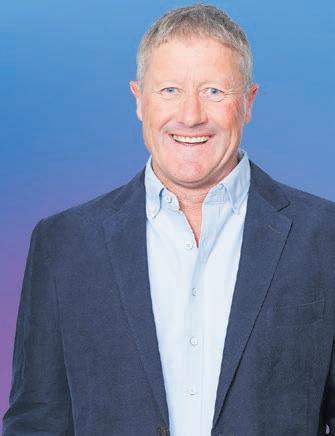
by Paul Campbell
New Zealand shearers Toa Henderson and Jack Fagan are riding high halfway through their Wools of New Zealand European four-nations competition tour that got underway at the Lochearnhead Shears in Scotland.
Northland shearer Henderson, representing New Zealand for the first time, claimed his place as winner of the New Zealand Open Shearing Championship and Fagan, who was in the Wools of New Zealand tour team last year, retained his position as third placegetter in the New Zealand Shears Circuit final, both events shorn in Te Kūiti.
In his first shearing venture in the Northern Hemisphere, and just four days after arriving from New Zealand, Henderson, in addition to posting fastest time in the test, made his way through the open field of 36 to reach the four-man final and finish fourth.
The Kiwis, managed by King Country competitions judge Neil Fagan, faced not only the challenge of a tough Scotland team on its home stage and gearing-up for the 2026 Golden Shears World Shearing and Woolhandling Championships in Masterton, but also the unfamiliarity with the Lochearnhead Shears’ Scottish blackface sheep, known as the “blackies”.
The challenge has been met successfully by New Zealand shearers in the past, notably last year when Wairarapa shearer David Buick won the open final, but no New Zealand team has beaten Scotland in any of the mainly-annual test matches at Lochearnhead since 2016.

Henderson and Fagan have also shorn in Yorkshire and against the French Shears in Boussac with a three-match series against Wales, coming up with tests at Cothi on July 19, the Royal Welsh Show on July 23 and the Corwen Shears on July 26.
“The 35-year-old Henderson is determined to make sure his first international bid is a success, taking one step at a time, buoyed by the support of his Kaiwaka community, especially the rugby club, where he has played as a flanker in the past, and father Mike has been a coach,” says Shearing

Sports New Zealand spokesman, Doug Laing.
“He is the front-runner for one of the two world championships’ New Zealand machine-shearing berths with wins in the first three events in the selection series, but that is all eight to nine months away.
“Having spent several years shearing merinos in Australia he is familiar with some of the hardest animals in the industry, but was yet to meet a ‘blackie’. Preparing for his first trip to the Northern Hemisphere, he was looking forward to the confrontation, and just getting into the swing of the competitions again.”













“With


























“Proud




































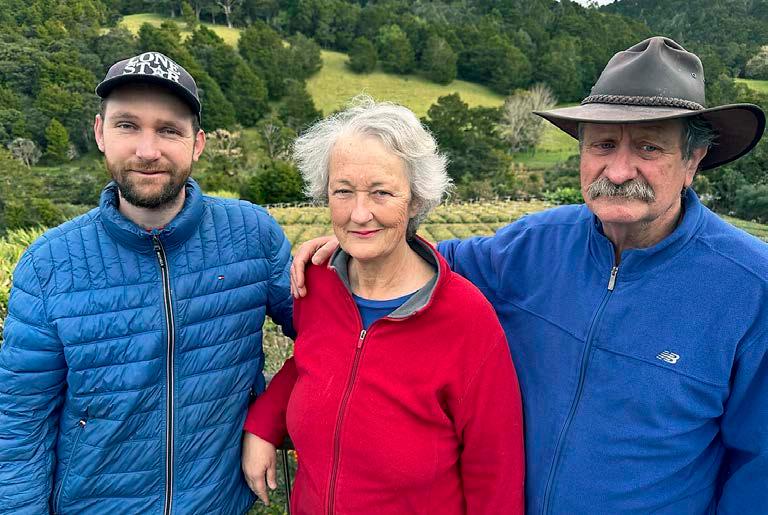
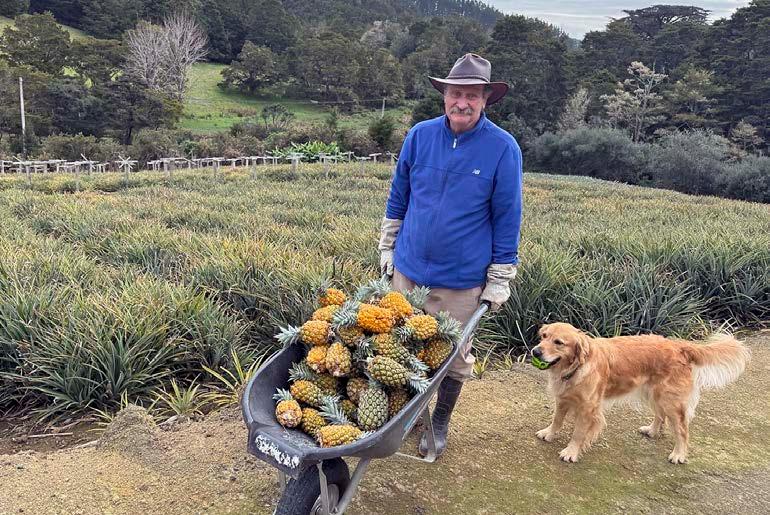
by Amy Fifita
Having explored Mike Hadland’s part in the new NZpineapples cooperative, this month we explore Owen Schafli’s pivotal role in the pineapple industry.
After starting the pineapple venture 11 years ago, Owen says this venture is a faith venture. One that is growing an industry unheard of in New Zealand until his arrival.
“The whole venture is a faith venture, and our New Year’s resolution for this year was, we will do our best and Christ will do the rest,” said Owen.
No stranger to growing the sweet bromeliad treat, Owen, his wife Linda
and son, Colin, all contribute towards the operation — Geneva Fruits.
“We came to New Zealand at the end of 2008, and we moved on to our farm at the end of May 2011. Starting off with bananas, we have been commercially growing Queen pineapple for 11 years.
“Initially growing them in South Africa, the Queen variety came to that country in 1860, making the species and the smooth Cayenne the main pineapple crops in the

nation. The Queen is a gourmet pineapple, and while Australia grows some, SA is the biggest exporter.
“Queen pineapples will grow to about 1.8 kilograms but, on average, just over a kilogram, whereas the canning varieties average two or more kilograms.”
While Owen has experience growing Queen pineapples, growing in New Zealand has provided a different climate. His experience has shown promise
for a robust pineapple industry to be established in Northland.
“With absolutely no pineapples being grown commercially, I started growing 400 a year. I sourced them from a friend who was growing them in a hothouse in Kaeo, and he was selling a few on the Kerikeri market.
“From 400, I have built up my pineapples and I now have about one and a half hectares, but because it has
NORTHPOWER ELECTRIC POWER TRUST (NEPT) NOTICE OF ANNUAL MEETING
The Annual Meeting of beneficiaries is to be held at Northland Events Centre, 51 Okara Drive, Whangārei, on Wednesday, 30th July 2025 at 1:00pm A light lunch will be served at 12:30pm Agenda
1 Minutes of last year’s Annual Meeting (held in Dargaville) in July 2024 2 Matters Arising 3 Presentation of the Trust’s Annual Report to Beneficiaries for the year ending 31 March 2025 4 Appointment of an Auditor for the 2025/2026 Financial Year
In accordance with S100 of the Electricity Industry Act 2010 the Consolidated Financial Statements of the Trust for the year ended 31 March 2025 and the Auditors Report on those financial statements are available for inspection, Monday to Friday, between 8.30am and 5pm at the office of the secretary (details below) For a PDF copy email nept@plusca co nz
Plus Chartered Accountants 22 John Street Whangarei
Phone: 09 438 3322
In accordance with S102 of the Electricity Industry Act 2010 - s(2) every beneficiary has one vote - s(3) The quorum for the annual meeting is 20 beneficiaries All Northpower Trust consumer beneficiaries in the Kaipara and Whangārei Districts who are connected to the Northpower electricity network are encouraged to attend Brent Martin, Secretariat
been over a longer period, they need to be planted out. We are sitting with 400,000 plants ready to be planted out.
“I have no more space to grow pineapples on and would like to encourage others to grow them to start the industry in New Zealand.”
With their network, including pineapple growers in Australia and South Africa, Owen and his family have immersed themselves in growing bananas. He wants to encourage local landowners to take the opportunity and add to the industry.
After Owen and Mike Hadland met at the Whangārei Growers’ Market, a bond was forged. Mike is helping Owen sell his excess plants to help the pineapple industry rise in Northland.
“The beauty of growing pineapples is that after five years, at the beginning of the sixth year, you have five times the amount that you started with. At that point, you pick your best suckers off and you replant them.
“You get 500% return on your plants, so if you haven’t paid off your debt yet, then you can pay it off on 40,000, and the other 160,000 plants can be replanted. It is like an endowment policy that, if grown properly, is a good return on expanding.
“Growing is intensive, and with pineapples, it is like growing tomatoes; you don’t need a large area. It is expensive to start off with, but within one to two years, the plants bear fruit.
“The fruit for the first two to three years is big with not too many small ones, but in their fourth or fifth year, they begin to get smaller when they multiply more with their suckers.

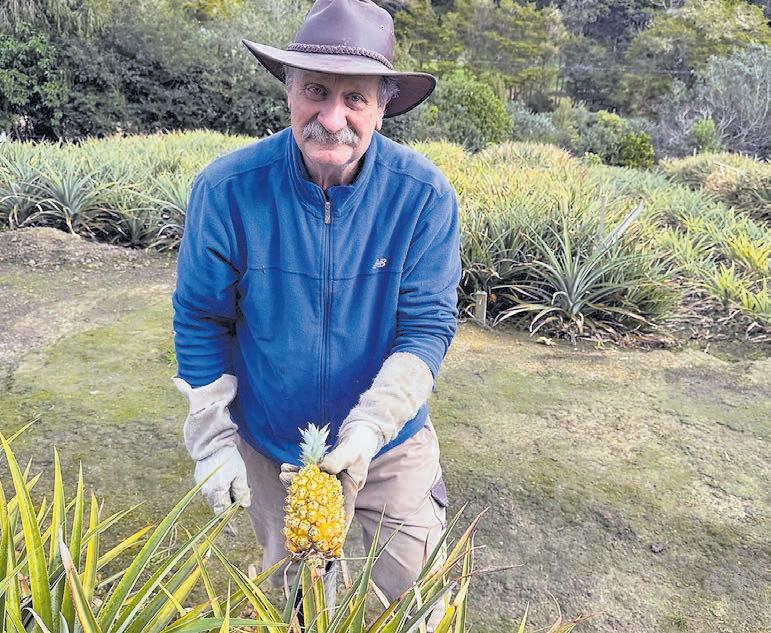
“If you hormone the pineapples, they would all bear over six weeks, and because I have about a hectare and don’t do that, I have pineapples all year round.
“The peak periods are from April to June. The only months that don’t always produce fruit are January and February, which is good, because it gives me time to have a break.”
Part of Owen’s success has been the support from his family. With Owen taking on the hands-on horticultural side, Linda and Colin help with bookkeeping and online advertising.
Phenomenal Crop Returns
Estimated first 6 years average “94%” per year
We are releasing plants for a new commercial pineapple crop in 2025
We see this crop as the start of a new industry in NZ Plant and Food Research have a report available on this crop

We estimate this crop will give returns better than any fruit crop currently grown in NZ with a massive bonus in the sixth year, repaying your entire investment plus a huge surplus on going.
A Partnership option is being offered to make it easier to get started in this new industry. Go to www.bacmil.co.nz
A Cooperative has been developed to support Growers ongoing through to the first harvest and sales.
Having purchased your first pineapple plants there is no need to purchase any more as they multiple giving more plants and fruit. A new pineapple variety will be exclusive to this Cooperative. This crop is ideally suited to Northland with its hot summers.

ROI estimate for the first 6 years is an average of 94% per year.
The returns for this crop are phenomenal.
Whangarei Seminar on Saturday 23rd August at Distinction Hotel, Hatea Room 9, Riverside Drive 1pm to 3pm
For further information: www.bacmil.co.nz Reply by email to: bacmil@xtra.co.nz


•
•
•
• Airs and dries your clothes
• Heats your spa pool
• Mains pressure (if required)
• 100% NZ owned and manufactured

“It is nice to do it as a team because we work on each other’s strengths. We sell at the Whangārei Growers Market every Saturday, and I have always sold out, sometimes early.
“Everything is spray-free, and there are no diseases amongst the pineapples at this stage. The best thing about pineapples is that it is a dryland crop, and you don’t have to irrigate them.”
Owen’s experience is a testimony to the promise in the pineapple industry. If you are interested in joining the cooperative, contact Mike at bacmil@xtra.co.nz.
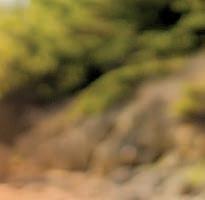









Asyourskincancerdoctors,itisourmissiontosavelives bymakingskincancercareaffordableandaccessibletoall Northlanders.Ourfocusisontheearlydiagnosisandeffective treatmentofskincancerinafriendlyandwelcomingenvironment.


by Amy Fifita
After more than two years of planning, the Lake Ōmāpere Trust has been selected to present its restoration plan at the World Lake Conference later this month in Brisbane, Australia.
Coming from all across the globe, the conference is bringing together scientific and industry experts, decision-makers, and practitioners to discuss what is an incredibly complex process of lake restoration.
“It is exciting to be part of that, and to position our thinking alongside the best in the world. We are fortunate to have some of the world’s leading experts supporting us with our project approach and ensuring
that our scientific basis is sound, including Professor David Hamilton, ” said trustee Marise Stuart.
Formerly abundant with freshwater mussels, eels and other aquatic plants, Lake Ōmāpere had a significant ecological collapse in 1984, and has been plagued with algal blooms ever since. Once known as the local food basket, this lake is very special to the people of Ngāpuhi.

“The historic kōrero is that if the lake is well — the people are well. So it aligns with the economic wellbeing, and potential of the community,” said Marise.
Marise says the plan includes edgeof-field interventions, involving sediment traps, riparian planting and wetland restoration, as well as removing in-lake sediment that has built up over decades.
“They are new-age terms for traditional ways of looking after our environment,

but it is more intentional because the wellbeing of the lake is at stake.
“We have had ongoing results showing poor water clarity and dissolved oxygen levels to the point that organisms that would normally thrive there can’t. A key part of the project is to restore the natural environs, so the organisms traditionally found in the ecosystem can eventually return and do their job at filtering and oxygenating the water.”








This approach is nothing new to farmers; however, Marise states it is less used in a public setting.
“We are bringing rural sector capability and freshwater improvement together. It also helps understand the pressures on both sides. We are excited about demonstrating how this can be a scalable exercise for lake restoration across New Zealand.”
The trust is working with Northland Regional Council, the Far North District Council, National Institute of Water and Atmospheric Research, Ministry for Primary Industries and the Department of Conservation.
“Lake Ōmāpere is a taonga. It is important to Ngāpuhi and the whole community, when it is not well, it is a cause of great concern, and we want to see it healthy,” said NRC councillor and local farmer, Joe Carr.
Based in the area, Joe remembers the first significant collapse and the impact it had on the community.
“I distinctly remember my son, who was born in 1984, and I swimming in the narrows of the Hokianga Harbour, the first major collapse. He ingested a bit of water, and the following day, he was an extremely sick person with raging headaches,” Joe said. “Before that, I had never realised how toxic the water was, and from then on, I realised it was as bad as people had claimed. No one wanted to accept it, and we had public meetings about it.
“Unless you get Lake Ōmāpere right as the starting point for improving the water quality of the Hokianga Harbour, you’re pushing uphill. We’ve decided to support getting all of the advice and information in getting that body of work together.”
Confirming the sentiment that if the lake is well, the people are well, restoration





will bring untapped opportunities in the Far North.
“Lake Ōmāpere sits in an economicallychallenged region where we have had significant underinvestment in infrastructure over several decades. The long-term opportunities for the region in initial planning saw well over 100 jobs, spanning multiple supply chain segments across numerous sectors,” says Marise.
The project has the support of farmers and Northland MP Grant McCallum, who says the lake trust’s planning efforts will significantly contribute to Northland through the restoration of the historic water infrastructure.
“In the late 70s and early 80s, the lake was supplying water to the municipality of Kaikohe. The lake trust wants to see that reoccur once the water quality improves through this exercise, which is highly encouraging. Not to mention the wider opportunities for horticulture and agriculture. Our region will greatly benefit from this project,” Mr McCallum said.







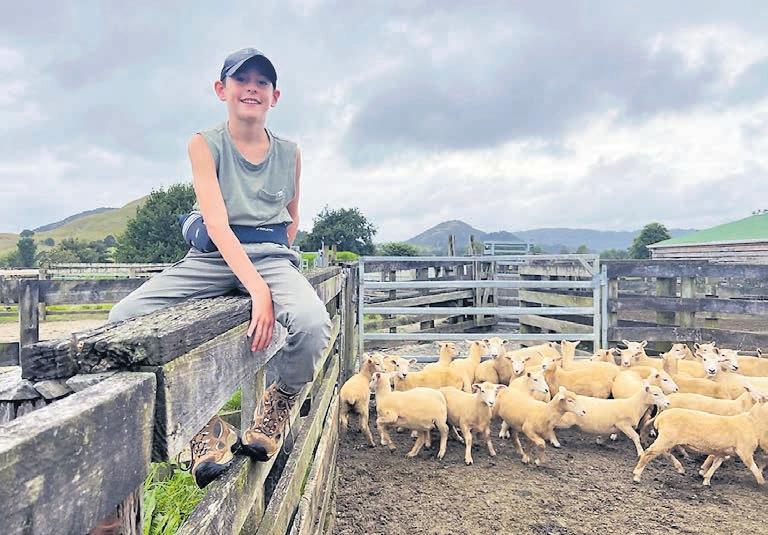
For Kobi, having Big Buddy Mark in his life has made a lasting impression on
future career.
Fleeing for safety before Kobi was born, Jody has raised him alongside his sister, Zani. Now 12 years old, Kobi has aspirations for being an army cadet and farming, after his experience on Mark’s family farm.
“It has been an emotional rollercoaster. When Mark came round for the first time, we were excited but also worried that it could be awkward,” said Jody. For Mark, the experience was about
positively impacting a young man’s life. With two sons grown, flown and attending university, Mark became a Big Buddy, willing to offer an hour a week to a child’s life and development.
“I’d found myself an empty nester thinking, what can I do to contribute to somebody else’s upbringing? For me, Big Buddy was the obvious choice,” said Mark. “It took a while to go through the process of being vetted and accepted.




When we finally matched, we were both very excited and after all the anticipation, that was a big deal.
“Kobi took me to show me his sock collection, of all things, and it became clear very quickly that we were going to get along.” The duo were fast friends from the very first day, and Jody says all she could hear was chatting and laughter. Difficulty struck when Mark was incapacitated and hospitalised.
“I knew Kobi was an active kid, and I’d said I was an active guy when looking for a Little Buddy match, which I usually am. When I contracted an infection in my hip replacement, I was suddenly stuck in a hospital bed.
“It was quite a different offering to what I had advertised, so that was quite challenging to get my head around at first.” With an instant appreciation for each other established from their


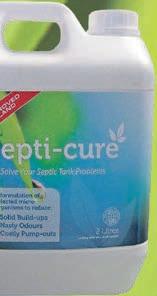









first meeting, Kobi wanted to continue engaging with Mark and visited him at the hospital. Soon, it would be Mark’s turn to visit Kobi in the hospital when a car hit Kobi while he was cycling home from school.
Traumatised physically and psychologically from the accident, Kobi was wheelchair bound for some time before going back to normal life.
“Having Mark’s support proved huge in Kobi’s recovery. He was quite traumatised after the accident, and Mark was amazing. He came to visit and lifted Kobi’s spirits and gave him lots to look forward to,” said Jody.
With a rough start behind them, Mark took Kobi on a rural escapade to his family farm in Kaipara. It is one of Kobi’s favourite experiences so far, and Mark ensured the 12-year-old was safe in all that he did.
“I was in the pen, picking up lambs. I reckon I lifted about 400 times my body weight that day. I learned there’s a technique to fixing fences, driving an ATV, and shooting a rifle,” said Kobi.
Sometimes, all it takes to make a difference is a bit of time spent, and for Kobi, having fun and learning skills from Mark has impacted him profoundly.
“It’s always super fun, and if there’s something new to learn, it might be hard at first, but I know I can do it. Mark’s taught me how to do so many things. He gives me a hand, then I’m off — there’s no stopping me.”






Research shows the importance of having a father in the home, and yet, so many children grow up without one. With a growing number of children being raised in single-parent households, Big Buddy helps bridge the gap, providing sons with father-like role models.
“The real experience of being a Big Buddy has more than exceeded my expectations,” says Mark.
“It is not all about the big things; it’s often little things like just sharing a laugh
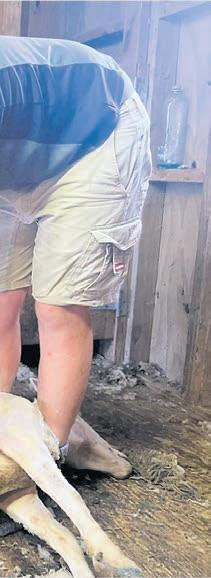
that add up. Kobi is so appreciative of everything we do, and he’s so enthusiastic and up for giving anything a go. He’s got such a lot of energy and that’s so good to be around.”
Big Buddy has 100 boys waiting for Big Buddies overall, and the average waiting time is nine months. To volunteer as a Big Buddy and make a positive change in a boy’s life, visit bigbuddy.org.nz/buddy-up/ become-a-big-buddy.

































































































































































































Kaipara Moana Remediation is doubling down on its investment in rural professionals.
With nearly 2.7 million natives planted throughout the Kaipara Moana catchment in 3.5 years, KMR Pou Tātaki Justine Daw says 2025 is already another busy year. As one of New Zealand’s largest catchment groups, KMR supports training and skills development for over 20 on-farm advisors. Recently, KMR Field Advisors came together at a workshop at Rural Design, one of KMR’s accredited nurseries, to upskill in the technical aspects of preparing for – and maintaining – planting projects around freshwater and on steep, erodible hillsides.
“KMR specialists and expert accredited suppliers ensured the training day was highly successful. The training covered both technical skills and hands-on learning through field visits to plantings of different ages and plant survival challenges,” says Justine.
“This type of training is central to KMR’s commitment to upskilling a cohort of 50 freshwater farm planners across the catchment. These skills are critical for good environmental outcomes and support forthcoming government policy.
During the KMR workshop, Rural Design Director Heath Worsfold reflected on the importance of working together to achieve outcomes.
“Working with a community of practice is increasingly important, which is why we are always keen to collaborate, share our learnings and learn from others in KMR. Between us all, there is so much knowledge and experience to draw on without reinventing things unnecessarily, as one size does not fit all when you are dealing with different landscapes and soil types,” says Heath.
“Through KMR’s support for training, mentoring and technical career development, KMR is supporting our Field Advisors to gain the necessary expertise to effectively co-design and support projects led by farmers, other landowners, catchment groups, and other groups in the community,” adds Justine.
“Ongoing central government funding from the latest budget investment, combined with support from our founding partners Auckland Council and Northland Regional Council, will allow KMR to continue to protect and restore the Kaipara harbour. In addition, this coming year will see KMR start investing in localised environmental monitoring led by farmers and groups within the Kaipara Moana catchment.
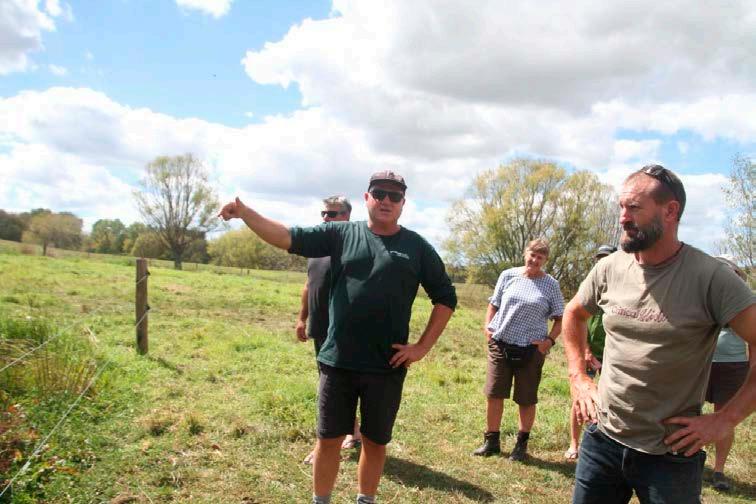
“Sediment is a long-term contaminant – while the scientific evidence is clear that our projects will make a difference to water quality in the harbour, by supporting some direct monitoring in rivers and streams near our project sites, KMR expects to demonstrate the benefits of taking action much earlier.
She says KMR can also provide support to those wanting to take action, to plant up waterways, protect wetlands and retire, plant or regenerate into natives on steep, eroding hillsides.
Come and join over 1,000 landowners and groups across the catchment who are already working with KMR!
KMR offers:
• Free advice - we walk the land with you to discuss your aspirations and project option
• Funding – KMR pays up to 50% of the cost of eligible projects to reduce sediment
• Planning and support – our Field Advisors prepare a plan to access KMR funding and provide support through the project.
Contact our team on hono@kmr.org.nz if:
• Your land is in the Kaipara Moana catchment
• You have wet areas on farm and are keen to plant them this winter
• You’d like to know more about how KMR can support you.

For more information or to sign up, visit our website or email us. Come and join us!
With hydrogen cyanamide under question for its toxicity, Syncron is emerging as a safe alternative for kiwifruit growers.

Hydrogen cyanamide has been used by horticulturalists, particularly kiwifruit growers, since the 1980s. After it was put under scrutiny in 2019 by the Environmental Protection Authority, Key Industries looked for an alternative in Syncron.
With concerns about the toxic nature of hydrogen cyanamide, Syncron provides a safer and natural option. Having been in replicated trials for four years, the product is eco-friendly and fits other factors, like performance.
“On our home block, we have just under five canopies of Gold3 and where we did the main trial work for Syncron,” said Kerikeri orchardist David Kelly.
“We have another little orchard down the road where we compared it to Armobreak and Syncron side-by-side. It’s 2.3 canopy hectares down there.”
Syncron provides growers with similar qualities for bud enhancing to the widelyused hydrogen cyanamide. With the sweet spot being 33 to 36 days before bud break, the product has shown promise to replace the agri-chemical hydrogen cyanamide.
“My expectations for the product were that it was user-friendly and didn’t create too many lateral flowers, and it has ticked both of those boxes. Timing is key. I don’t think the window is as broad as hydrogen cyanamide.”
To induce phytohormonal activity, Syncron needs to be used with Calcinit. Together, the additives break seed dormancy, increasing the opportunity for uniform budbreak. With four years of trials behind it, Syncron was found to be a viable and safer alternative.
by John Arts, Abundant Health Ltd
We usually make all the coenzyme Q10 (CoQ10) we need. Some, however, should take extra as a supplement.
CoQ10 is mostly made in your liver from the same enzymes that make cholesterol. This is why drugs that reduce cholesterol can significantly reduce CoQ10 and can cause side effects that are so common that they are now diagnosable diseases. Many pharmacists recommend CoQ10 to people collecting statin prescriptions.
The main role of CoQ10 is to move hydrogen electrons within your cell mitochondria to produce energy. Inadequate CoQ10 levels reduce cell energy usually felt as tiredness and muscle weakness.
I have a client who had experienced significant muscle pain while on statins. After a few months taking a quality CoQ10 the pain had gone and they can now tolerate the medication without side effects.
I generally find it takes one to two months to improve muscle function and energy.
Muscle issues from statin use is one of the most common reasons for muscle and tendon pain and weakness. I spoke to

someone yesterday whose muscles had started to break down while on statins. It is a shame that many suffer needlessly, as in most cases, it is quickly resolved with a high-quality CoQ10 without having to stop the medication. I recommend CoQ10 for those with health issues known to reduce energy especially those with autoimmune or neurodegenerative problems. While CoQ10 is not a cure, it can help to lift general energy and wellbeing.
I will add a quality, naturally-fermented, patented CoQ10 or my mitochondrial formula for those needing extra CoQ10, plus a lift in energy. This combines CoQ10 with a B vitamin complex plus other energy co-factors. Most people feel a real difference within one to two months.
John Arts (Adv.Dip.Nut.Med) is a nutritional medicine practitioner and founder of Abundant Health Ltd. For questions or advice contact John on 0800 423 559 or email john@abundant.co.nz. Join his newsletter at abundant.co.nz.






























































































































by Andy Bryenton








An ambitious plan to reward landowners who protect biodiversity voluntarily has been tabled by the coalition government.


















Associate Environment and Agriculture Minister Andrew Hoggard announced moves to start a pilot scheme for the trading of voluntary nature credits at National Fieldays, and has since elaborated on the idea in a speech to the New Zealand Farm Trust’s alumni.

lack of available Kiwi projects ready to be invested in.
Mr Hoggard opined that New Zealand exports rely on the nation’s clean green environmental image, with 80 per cent of exports, worth $59.6 billion, headed to markets where environmental, social and governance reporting is required.


























Core to the concept is that landowners and conservation groups will be able to gain credits, similar in nature to those used to denote sequestered CO ² , for areas of wilderness, bush and wetlands in their care. It’s a combination of an incentive to protect significant areas of natural importance, with fiscal pragmatism.

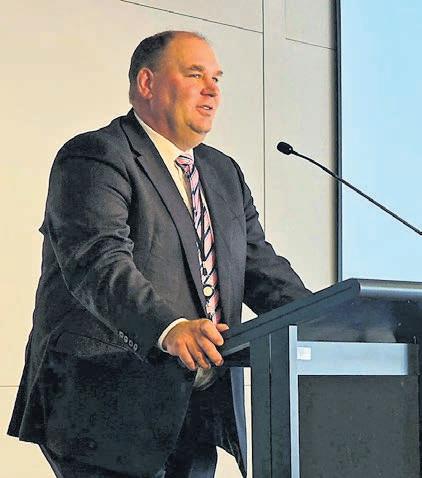





While the pilot is seen as a positive step by many, opponents note that the idea of a credit system still remains debatable, in that companies are offsetting pollution rather than curtailing it. Nevertheless, for farmers who not long ago were concerned that areas of their privately-owned land could be locked down by SNA rulings, Mr Hoggard’s announcement is a breath of fresh air.

and map SNAs, after the suspension of parts of the National Policy Statement on Indigenous Biodiversity.




















An example is Te Toa Whenua Northland, led by Reconnecting Northland. This group is transitioning around 100ha from exotic forestry to native, including pest control on iwiowned land. Under the new scheme’s pilot programme, this will earn tradeable credits. Proponents of the plan see this as a much better way to engage in the carbon trade than planting pines on productive farmland, but it’s also voluntary, unlike the now-scrapped plan of mapping and enforcing Significant Natural Areas (SNAs) on private land. This contentious policy was quickly done away with by the coalition government, and councils no longer have to identify





“Farmers and other private landowners are doing their part to protect native biodiversity and want to do more. Supporting voluntary nature credit markets is a chance for the government to show them the carrot, not just the stick,” said Mr Hoggard.
In 2024 New Zealand investors spent more than $20 million on voluntary nature and carbon credits. However, the bulk of this investment went offshore, due to a
The decision to push ahead with a tradeable scheme for voluntary protection of privately-owned areas of land comes following government plans to grant an extra $4.5 million to the QEII Trust. The trust has supported voluntary conservation efforts by landowners since its inception in 1977.
“Many of our most at-risk plants and animals are found on private land,” said Conservation Minister Tama Potaka. “Landowners provide a significant contribution to conservation efforts through additional planting, pest control and fencing work.”




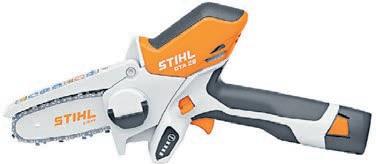

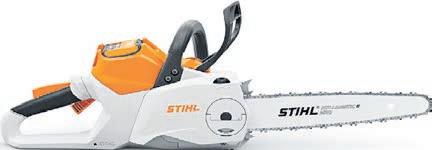



by Amy Fifita
A massive banana statue will be planted on the side of State Highway One by the Tropical Fruit Growers of New Zealand, a celebration of the industry in Northland.
Founded in 2015, the group began as an incorporated society for tropical growers in Northland to thrive. Now, shaking its incorporated status, the collective is distributing funds back into the community, with one project celebrating the region’s banana industry.
“Concentrating on speciality with the banana and pineapple growers having their own groups, we stopped being an incorporated society. That means we have money to disperse that we will put back into the community,” said chair Hugh Rose. “It will go towards funding for articles about the agricultural industry.
We also want to erect a statue to banana growers, the biggest tropical fruit industry in Northland, and put it at the entrance to Whangārei alongside SH1.
“We are going through the planning process, and it will be at least six-metres tall and will be quirky and different and visible. It will make a statement.
“The statue will be a reminder of what tropical fruit growers can achieve, and bananas are just a part of it. We are blessed with the climate in Northland, and we can grow them with ease.”
The society has driven the ambition of growing tropical fruit in Northland forward. Importers, like Dole, have shown interest in the local industry as a possible supplier for New Zealand.

“As TFG, we formed a group about a decade ago, when everyone thought it was not commercially viable. I knew that we could achieve it.
“The oldest banana clump in NZ, still existing today, was planted in 1890. In the 1950s, a rāhui was put on banana importation so Samoa could supply Australasia — NZ’s contribution to the island was being administered by it.”
Growing bananas in New Zealand became unheard of, until Northland growers started to experiment with tropical fruit.
“With bananas and pineapples, having a longer growing process, the fruit is much denser with more nutrition and sugar. If you have a few acres, think about planting tropical fruit. Whether it is pineapples, bananas, sugarcane, jackfruit or white guava, the returns are fantastic and we can happily supply them.”
For more information, visit tropicalfruitgrowers.nz.

Tropical Fruit Growers of New Zealand’s shift from an incorporated society to a distributed, web-based network of like-minded farmers offering mutual support has led to another chance to get things growing.
The organisation will use a portion of the funds remaining in its coffers, after changing away from being an incorporated society, to promote the thriving exotic fruit sector and boost its public visibility. That means a suggestion made by the group’s




treasurer can now come to fruition; supporting young media creators in print and beyond.
The article you’ve just read, above, was penned by the Northland Farming Lifestyles’ feature writer, Amy Fifita. Other students and emerging media talents will benefit in the future from this community disbursement, says Pauline Rose of TFGNZ, and at the same time, the burgeoning tropical and exotic fruit industry will find a wider audience, too.


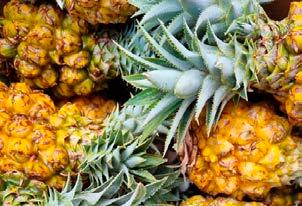


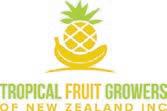
by Andy Bryenton
Daffodil Day is coming again in August, with support for the hard work of the Cancer Society at the forefront of volunteers’ minds as they hit the streets, turning towns around New Zealand
By the time you receive your next edition of the Northern Farming Lifestyles, it may already be time to paint the town yellow for the cause, so to boost involvement and visibility, we’ve decided to fly the flag a little early.
There are many reasons why Daffodil Day is one of the most supported and respected charity appeals on the Kiwi calendar. Nearly everyone in the nation has a friend, relative or colleague who has battled cancer. Statistically, 25,000 New Zealanders will receive that diagnosis each year. With medical science improving every day, thanks to funding for research, the chances of making a full recovery are getting better all the time.
Early detection, good care and solid support are the keys to success. To aid in this, the NZCS puts in more than one million kilometres of drive time to get patients to their medical appointments each year. It provides 50,000 nights of free accommodation to bring people closer to specialist medical services. Add in their work promoting early detection and educating people on cancer risks, advocating for better healthcare












and operating a fulltime telephone service for information. It’s easy to see why the people behind the daffodil appeal are so wellrespected. A further $5.2 million was granted to those researching lifesaving anti-cancer treatments last year, thanks to the generosity of average Kiwis.
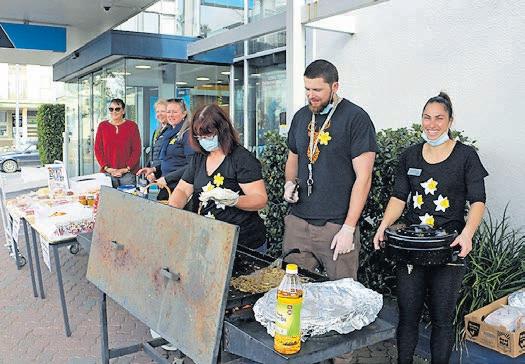
The NZCS works closely with hospitals, doctors and other care service providers, and has the respect of all within the medical profession. Those who work for Kaipara’s hospice are just some of those who benefit from this collaboration.
“They are simply wonderful,” says Hospice Kaipara spokesperson Annette Olsen. “Working to support families and patients, they are a dedicated team and very supportive. With us, with the hospital and in the wider community, they are doing a great job.”




there is


The daffodil was chosen as the emblem for its annual appeal, symbolising springtime, new life and hope. It’s been adopted by similar charitable organisations worldwide, becoming the international symbol of the fight for a cure and volunteers’ excellent work helping patients’ families.
Please give generously when you see the charity collectors out and about next month, or make a donation online via daffodilday.org.nz any time of the year.










































With your help, there is hope! We’re proud to stand with the NZCS this Daffodil Day”










































































“With respect and support for the CSNZ and all their work for bringing hope”































Ph: 09 423 7788 or 027 486 4934 www.polandmotors.co.nz “Proud to support the search for a cure” Ph: 09 408 1340 Cell: 021


















3201 “Proud to support the search for a cure” Ph: 09 425 8439 service@warkworthtoyota.co.nz sales@warkworthtoyota.co.nz























































“With your help, there is hope! Sharing our full support with the CSNZ this Daffodil Day”







by Paul Campbell
Kaikohe stands slightly apart from other centres due to a grave, the last resting place of a worthy war chief who defied colonial authority by wielding an axe against a flagpole
As the first Māori to sign the Treaty of Waitangi, Ngāpuhi chief Hōne Heke Pōkai presaged a bit of doubt about things and expressed his thoughts by repeatedly
attacking the flagstaff on the hill above Kororāreka, now Russell, when it was a political and economic centre.
Heke’s lieutenant Te Haratua, first attacked the flagstaff in July 1844. The British put it up again but it toppled twice in January 1845. Another attack on March 11 sparked war with colonial forces in the north. The Flagstaff War was also complex because two Ngāpuhi factions battled against each other, as Heke fought both the British and Ngāpuhi, led by Tāmati Wāka Nene. The fighting ended with no winners in January 1846.
wide area. In the 1880s Europeans, lured by the trade, soon established the town in the centre of the mid-north gum fields. By 1890 eight European families were living there as businesses were established and, by 1892, there was a blacksmith’s shop, wheelwright, storekeeper, saddler, photographer, auctioneer and boot and shoemaker.










Hōne Heke retired, and died in Kaikohe in 1850. Meanwhile, a memorial on a Kaikohe hill celebrates his grandnephew,

Hōne Heke Ngāpua, who became a member of parliament and active supporter of the Māori parliamentary movement known as kotahitanga. Kaikohe grew on the basis of the gum trade, and those first gum prospectors were the Māori working the land in their own areas. By the 1860s the market for gum was in a healthy state, and European immigrants were arriving to join in the diggings over a
Kaikohe soon became the commercial centre for the gum trade, until a rail link south was made in 1914 and dairy farming developed. After the first world war returned servicemen settled there and the town became a thriving rural community between the wars.
Then, an international touch arrived.
After the bombing of Pearl Harbour in December 1941, New Zealand was under the perceived threat of Japanese invasion, and Northland was seen as a possible enemy landing ground against Auckland after Japan bombed Darwin in Australia’s north.
Efforts ramped up to boost defences, and here entered the might of the United States to bolster defences then
Hōne Heke and the flagpole comprising a Kiwi observation post with a view of the Bay of Islands where a network of sea mines lurked at the entrance of Whangaroa Harbour.
Today’s Kaikohe Airport began life as a base for American long-range bombers to operate in the South Pacific. Thousands of US Marines arrived in New Zealand to take the war into the Pacific and on the way to Japan, and some were stationed in camps in Northland, while Kaikohe was a base for a US army hospital and air force bomber unit.






by Paul Campbell
On a Northland visit it seems that all roads seem to lead to Kaikohe, earning it the title on many travel advisories as ‘the hub of the north’ with its middle location on what is a narrow section of the country with the sea never more than minutes away.
South of Kaitaia and Cape Reinga, west of the Bay of Islands and Paihia, and east of the Hokianga Harbour, it offers a welcome stop with all the amenities of a town with a population still below 5,000 permanent urban residents. It is, however, the catchment of a larger rural and farming population.
History has well-endowed the town with more detail on another page of this issue, but for the visitor a photograph or two can be found on the 300-metre hill — Hōne Heke Memorial Park. In fact, the old warrior Hōne Heke sat on top of the hill after a local battle and composed a lament for his fallen comrades.
The town is also well worth a stopover, be it for a selection of food outlets and cafes, and accommodation at hostelries usually offering WiFi and free parking. A stay means a visit to nearby Ngāwhā Springs resort — a great way to ease the rigours of travel.
For the energetic though, there is the Twin Coast Cycle Trail offering cycle hire
and one to three-day tours, suited to all ages and fitness levels. The trail runs east and west and is not to be confused with the Twin Coast Discovery highway that you drive around Northland.
For a more casual outing there is plenty to see and next stop is the Pioneer Village. Buildings include the Waimate North Courthouse built in 1862, which is the oldest courthouse in New Zealand, the Maioha Cottage built in 1875 and Utakura Hall and School built in 1891. The machinery collection machinery includes the only surviving Albion Cuthbertson Water Buffalo, a unique tracked vehicle, in New Zealand — one of only five in the world.
Then, there’s the Northland Fire Engine Museum Trust displaying items from the first hand cart appliance to the modern engine and everything in between. Models and photos of progression throughout the years in New Zealand and around the world. This includes uniforms, badges, helmets and equipment in what
is the biggest publicly owned display in the north.
Moreover, as already indicated, Kaikohe has earned the ‘hub of the north’ descriptive and is an ideal launch pad to explore the winterless north further afield, within easy driving of bustling Whangārei, and north to the Bay of Islands and marine tours. Then, there are both the Tasman and Pacific oceans within easy reach. Perhaps no Northland visit should miss out on meeting those two bodies of water joining forces at the far north tip of New Zealand — Cape Reinga.





by Liz Clark
Most people are familiar with the iconic Golden Bay Cement works just near Whangārei that stemmed from humble beginnings on nearby Matakohe–Limestone Island.
Hamilton Vetch Rutherfurd and his brother John Schaw Rutherfurd in the 1880s operated a lime works and began small-scale cement manufacturing in 1886, supplying products to local and regional industries, trading as Rutherfurd and Company. Henry Archibald Going was employed in 1889 to oversee the cement operations.
The two brothers continued their partnership until 1893, when it was dissolved, and John formed a new
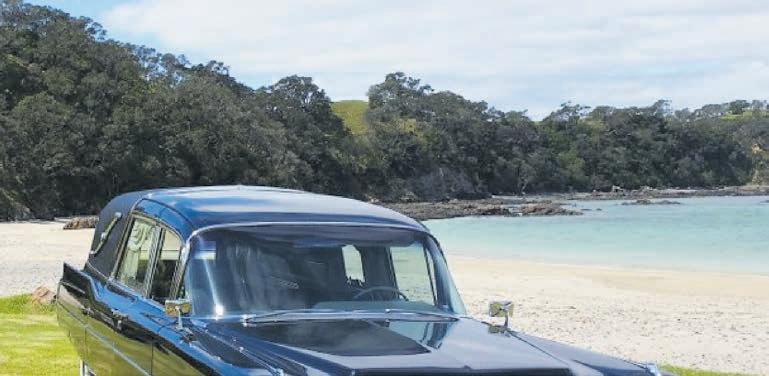


USA. The output that year increased from 400,000 barrels a year to 2.5 million.























































with Begg as one of the provisional directors, with the aim of taking over the island and the plant on it.
























The company, in its prospectus at the time, stated: ‘It is proposed to add a first-class plant on the latest lines for the manufacture of Portland Cement. The output at first will be 35 tons a week — with a night shift, this can be raised to 70 tons a week — at a cost of 30s per ton.’
By early 1897, the site had been upgraded to include the latest in technology and the services of AH Hall, an experienced cement maker from England, to keep the manufacturing facilities running smoothly. A company revamp and new upgrades came in 1900, with the addition of two new Tangye engines and cement-making machinery from the

With a growing community of workers living on the island with their families, a school to educate the children was established in 1902. In the same year, however, a catastrophic fire destroyed the cement works, which had only been recently upgraded, costing £15,000. The complex was rebuilt and then expanded in 1906 to double the output.
A further fire occurred in 1915, once more destroying the site. However, despite the setback, the New Zealand Portland Cement Company continued to expand and grow until it took over the opposition company Dominion Portland Cement in 1918. Dominion had previously established an onshore factory site to make cement. Its new owner revamped the former Dominion site, and, by 1924, the works at Limestone Island were closed.




by Andy Bryenton
The government is making it less expensive to build houses by changing
healthy homes.
“I’ve heard clearly from the industry that the current one-size-fits-all approach to insulation requirements is needlessly driving-up costs,” said Building and Construction Minister Chris Penk, on the announcement of a raft of new rule changes.
“The most prescriptive compliance pathway currently available for insulation, known as the Schedule Method, doesn’t allow for design trade-offs that can affect a home’s energy efficiency, like adjusting window size.
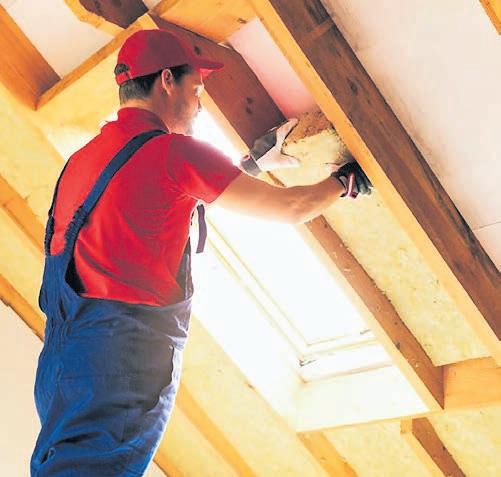
Rules around insulation, which builders described as a ‘blunt instrument’ and ‘unfit for purpose’ have been changed from a one-size-fits-nobody approach to a more-tailored system
“This has led to designers and homeowners having to over-insulate in certain areas to achieve Building Code compliance, offering little extra energy efficiency benefit at a significant cost.”
It was often a case of the rules being an impediment to progress, and still not delivering good outcomes. With smarter tools now available to calculate thermal retention, energy efficiency and overall insulation optimisation, builders should not need to apply the blunt tool of the old rules.
The upshot is a saving of an average $15,000 on every new home; not an inconsiderable sum. Also on the horizon is a possible change to the rules in Northland, which has a more subtropical climate than other more southerly parts of the nation.
The changes represent a middleground approach to insulation law, with the plan laid out by Mr Penk, in early July, earning praise from builders and healthy housing advocates.
That’s because the rhetoric from the coalition government, in 2024, was leaning towards the scrapping of insulation standards. At the time, it’s reported spokespeople for the building industry made claims that the cost of a home was being driven up by more than $50,000 by the Healthy Homes’ standards. However, investigation by Mr Penk’s ministry found these claims were contradicted by independent advice.
“I’m really proud to say that Certified Builders, Construction Industry Council, ADNZ (Architectural Designers New Zealand), BRANZ (Building Research Association of New Zealand) and others stepped in and said, no, you should not be taking out insulation, and it’s bad design that is to blame, not insulation, for overheating,” said Green Housing Council head Andrew Eagles.
The government listened, which is a good thing from the perspective of another department; that of health. It’s
estimated that warmer, drier homes delivered by logical insulation and heating rules have already resulted in less stress on busy doctors and hospitals.

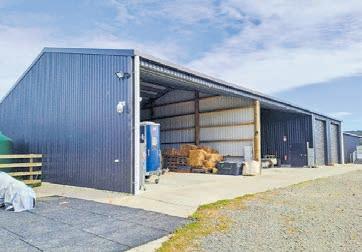


The new rules are likely to be published in their final form in November, meaning that building will be a cheaper and more flexible process in the new year.

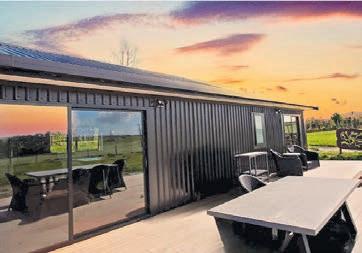







This great mid-year special is just $62k +GST inc.
with clearspan, and 4.2 to 5.2 m




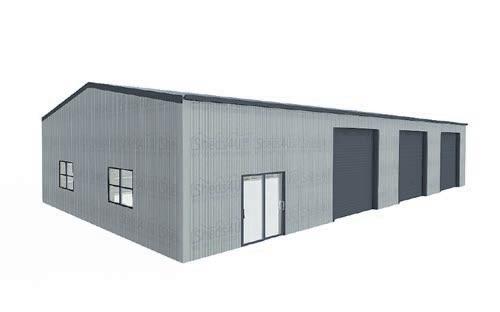








She’s dressed to impress but it’s her hidden talents that make her extra special. She has streamlined panels and loves to dress up so customised coloured panels are available. Her fixed base has a removable cover providing an alternative look along with a wood storage option.









Flair is a solid mid-range fire designed to captivate and comfort your kiwi household along with a generous stove top cooking surface to nourish the family. With her Wagener genes underneath she’s built tough for top performance and to stand the test of time.



by Andy Bryenton
They have dictated the aesthetics of great cities and the way we think about whole cultures, and some were even thought to have supernatural powers, but the hard reality is that architects and designers are fundamental to getting a building job done right.
Ancient peoples revered those who could master the secrets of mathematics and geometry to build with stone. In truly prehistoric times, there was a lot of crossover with religion and mysticism. For example, the people who designed Stonehenge were likely more of a priesthood than a group of tradespeople.
The oldest instance of an architectural plan right next to the completed work comes from Jordan, and it’s carved into a sandstone block nearly a metre tall. It depicts a structure for capturing and corralling animals, and we know that’s what it is because the ruins of the structure are next door. It dates from nearly 9,000 years ago.
In the same vicinity, the first architect in recorded history was King Gudea of Mesopotamia, who, like Solomon in later legends, is credited with designing his own great temple and is depicted with the plans drawn up to scale. His reign occurred 2,100 years before the birth of Christ, and rather than taking the title of lord, he was known by a word that

Architects and designers have been imagining plans and turning them into reality for at least 9,000 years, like the oldest known architect, ‘town planner’ Gueda
meant town planner. He’s even carved wearing the headdress of a stonemason, not a crown.
There’s a school of thought that architecture, art and human thought all evolved together. The ability to understand that details in a drawing could be turned into a three-dimensional reality (and one that didn’t collapse) was a major leap of logic for our distant ancestors. The mathematics used to build was often cloaked in secrecy as a kind of magic.
There’s also a big difference in the practicality of a plan to scale, drawn from above, from the abstract images painted from one side that typify cave painting and hieroglyphs. Early architects had to adopt a bird’s eye view using their imagination, while earlier art was always from the point of view of a person on the ground.
In modern times, the tools of the architect and designer have gone digital, and materials technology has delivered the ability to build more artistically and with greater efficiency. You might not be planning a massive cathedral, mighty fortress or holy temple to last through the millennia, but if you’re looking to build smart, stay on budget and create
something that’s fit for purpose, even a simple shed or barn, it all starts with a clever design that fits the land you’ve got to work with.

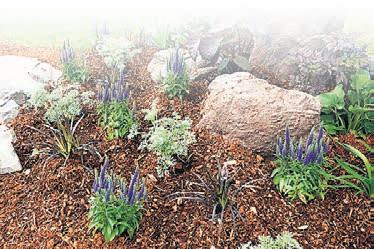

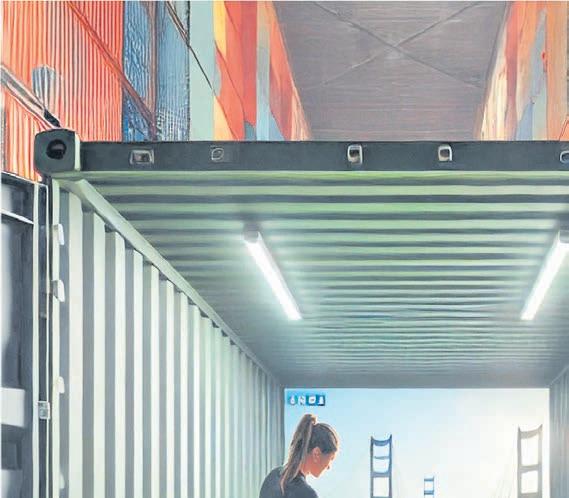



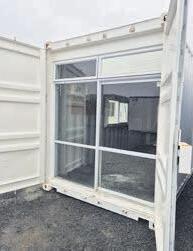
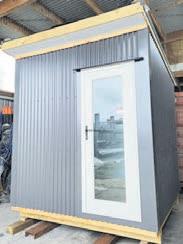
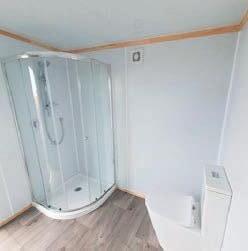











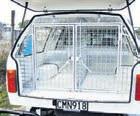







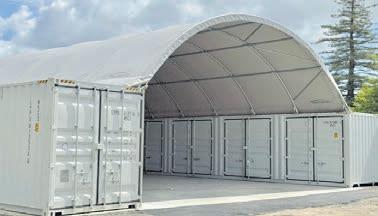
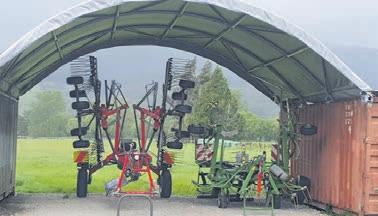

From cowsheds to subdividing, Northland Power Services has all your rural electrical supply needs covered.
Providing the Northland farming community with complex electrical work, NPS is an approved contractor for Northpower and Top Energy. Services include trenching and cable laying, private line maintenance, service connection and high voltage cable jointing.
“The field team and I are all exNorthpower employees. We have been around for over four years operating as Northland Power Services — also known as NPS,” said Alister Bain.
“NPS has a team of five, and loves getting out there and meeting new people, while helping the farmers and giving them a fair price.”
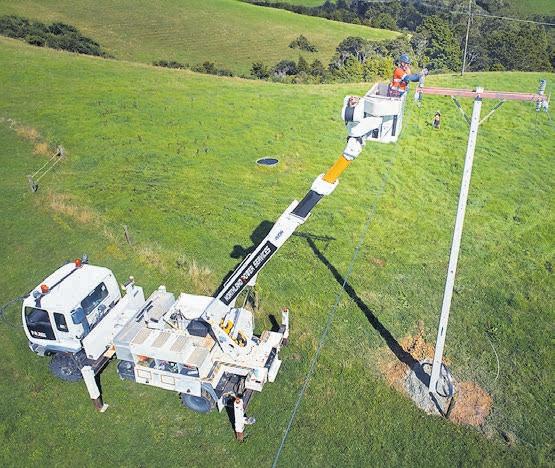
In the rural space, the company provides free service line inspections for farmers, ensuring livestock are safe and the farm has a reliable power supply. NPS is a reliable contractor with machinery to get across rough terrain.
“Some farmers may not be aware that they own and are responsible for the maintenance
of the lines inside their property, feeding structures like cowsheds and pump sheds. These lines require maintenance.
“When Northpower sends out unsafe service line forms, farmers have to engage contractors like us to go out and make the repairs.”




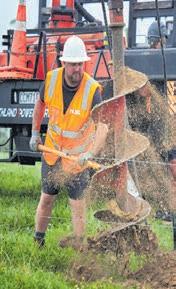

Alister encourages farmers to get ahead of the game and get preventative maintenance done on the lines before an issue arises. It saves the hassle of repairing service lines when they break, often during storms and other emergencies.
“Issues that can arise are broken wooden poles from rot or wear and tear, snapped crossarms and broken conductors that can break and fall. Fuses can often blow, leading to cattle death.
“After the free line check, NPS offers suggestions, saving you from unwanted power outages and electrocuted stock.
“NPS can also build new powerlines for farmers wanting to get 11,000-volt lines to their cowsheds, we can design and build that, and Northpower can take ownership of it.”
The services don’t stop there. Offering land development services, whether it is chopping your backyard into an extra lot or creating a subdivision, the team can perform.
“If you are looking at subdividing your land and needing the power to the boundary to sell it, then we can do that, too. We take care of the design stage, submit it to Northpower or Top Energy, get approval and send it back for you (the owners) to get their sign off.”
Having had extensive experience in the industry, NPS can cater to all of your maintenance and power supply needs. For further information, visit northlandpowerservices.co.nz or contact Alister on 021 195 6099.




by Andy Bryenton
Investment Boost is the name of a new scheme developed by the government to encourage farmers and other business owners to invest in their own operations.
Announced in late May, but hitting its full impact during the National Fieldays in mid-June, the tax package effectively cuts one-fifth from the price of all new farming machinery, vehicles, equipment, plant and buildings. This is returned as a tax credit, with the aim of the plan being to persuade farmers to retrench some of the high payouts coming from record beef, dairy and crop prices into self-investment.
“There’s no cap on the value of eligible investments. All businesses, regardless of size, can benefit,” said Finance Minister Nicola Willis.
“Investment Boost delivers more bang for buck than a company tax cut because it only applies to new investments, not those made in the past.”
Here’s how it works. Businesses can claim 20 per cent deductions for the costs of new (or new to New Zealand) business assets that they bought, or finished
constructing, on or after May 22 2025, according to Inland Revenue. They can then still claim depreciation as usual on the remaining 80 per cent.
That’s a big discount, amounting to tens of thousands of dollars, and it’s able to be claimed on any new or New-Zealand-new assets. That could mean dairy machinery, ATVs, tractors, harvesting equipment, trailers, bailers, effluent infrastructure or silos. It can also stretch to encompass any non-residential building constructed on a farm, for commercial or industrial purposes. Furthermore, improvements to primary sector land are also covered. There’s also the opportunity for nonprimary industries, such as transport and logistics companies, to get on board and improve their fleets or premises. Full details of who qualifies, and how much they could claim back, are available at ird. govt.nz/investment-boost.
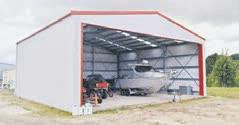
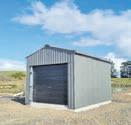


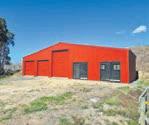

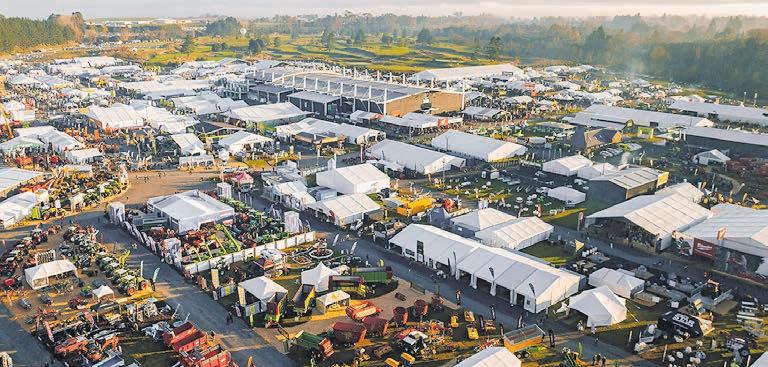
The coalition government’s Investment Boost tax break has driven exceptional interest in vehicles, plant and machinery at the recent Fieldays in Mystery Creek
“The Treasury and Inland Revenue estimate Investment Boost will improve economic growth, lifting New Zealand’s GDP by one per cent, wages by 1.5 per cent and our capital stock by 1.6 per cent over the next 20 years, with around half these gains expected in the first five years,” says Ms Willis.
“Investment Boost starts today and applies to new assets purchased in New
Zealand as well as new and used assets imported from overseas. It includes commercial buildings but excludes land, residential buildings and assets already in use in New Zealand.”
The message to farmers and business owners is to act fast; demand will be high as evidenced by vehicle and equipment sales at Fieldays. For buildings, the waiting lists could stretch unless you act soon.
















by Colin Hannah, Federated Farmers Northland president
Our many and varied agricultural small businesses and very large operations do a great job in Northland producing food, providing employment and supporting their local communities.
They have a myriad of obligations to meet in this process, some legislated and others just as good community citizens. These obligations all take up so much of our time, and most of what they do in this way does not generate any revenue for their businesses.
Almost daily I hear of someone in rural Northland doing some amazing stuff for someone else — without expectation of reward.
I recently had a meeting with another association that does great work across the length and breadth of New Zealand with large manufacturing companies that further process our raw product into what the overseas markets want.
That organisation is the Employers and Manufacturers Association — EMA for short. Federated Farmers has a long association with EMA. That association allows our members to utilise their services, particularly around education.
Under New Zealand legislation, small to large businesses are obligated to provide a competent level of health and
safety training. Businesses must develop employee skill sets and provide personal development, as that improves the productivity of our great country.
As a result of that meeting, I received a greater understanding of their educational service offerings and realised these training programmes are certified. The certification is recognised in New Zealand and Australia. That is one of the important facets that the business has proof of the seriousness of their responsibility to their employees.
On a deep look at the number of training programmes, two really stood out that would be beneficial to our farming community and businesses. These programmes are run throughout Northland, when enough numbers arise, reducing the need to travel any great distance for training.
The first was the health and safety training on offer, and second, a leadership programme for staff development. These programmes are open to all farming operations, whether you are a Federated Farmers’ member or not.

Federated Farmers members get to enjoy a discount for these training programmes through the EMA. Federated Farmers Northland can help your employees to receive the training, or you can work with the EMA manager for this region for the course prescription and training.
This is an opportunity to reduce the impact of the obligations and give a sense of freedom that you and your business are doing the right things for your employees and for the community.
The contacts are colin@colmarpark. com, or jason.reeves@ema.co.nz.

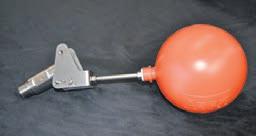
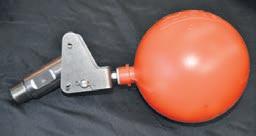

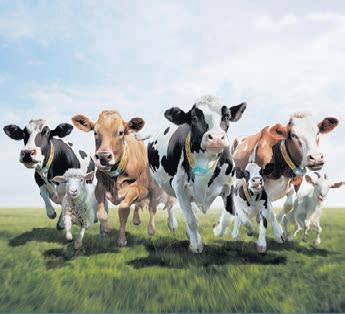



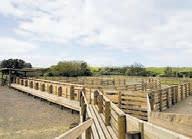

by Andy Bryenton
When businesses around Northland
The letters EQP spell opportunity for hard-working Northlanders, who require machinery that open up new horizons for their businesses.
Seeing a demand in the market for quality refurbished machines, such as bucket trucks, lifting machinery, forklifts and agricultural equipment, Tim Baker and his colleagues at AgSpares have launched a new subsidiary with serious potential.
Their discussion, six months ago, led to a new direction for the crew who are famous for keeping Northland tractors in action. It’s a division specialising in providing the right tools for those big jobs.
There’s a lot of lateral movement in the market, says Tim. Smaller contractors are often asked to take on jobs requiring them to have certified, capable machinery, and growing businesses might identify a particular item of equipment which will unlock fresh income streams. The barrier, until now, has often been the cost of buying such machines new.
His answer has expanded into a whole new subsidiary called EQP — Equipment That Works. Their role is to comprehensively refurbish hand-picked equipment to the highest standard. Where necessary, this includes the machines being refurbished to such a level that they are recertified.
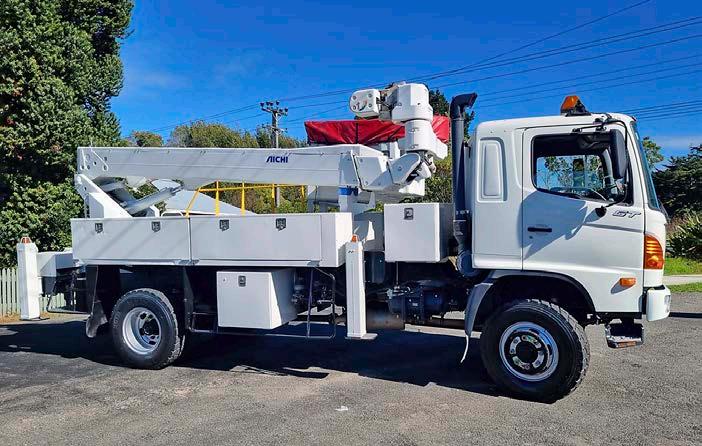

At EQP.NZ we specialise in delivering top-quality rejuvenated machinery built to perform vital pieces of equipment. EQP has finance and leasing options, as well as some very sharp buy-now prices, and they’re keen to talk to businesses now about how they can help them grow.
Where certification is required, such as in bucket trucks and EWPs, the team uses independent specialist engineering companies. That means a real rebuild by seasoned veterans of the trade, many of whom are also part of AgSpares’ threedecade success story.
“Some businesses can’t afford the high capital cost of purchasing new machinery, yet the business still needs reliability and troublefree performance, which can be lacking in high-hours used machinery. Recent price
increases and shortage of supply have also meant the price of new imported machinery is now out of reach for many of our customers,” says Tim.
A reliable result to last the test of time (and tough worksites) is the result. EQP doesn’t just keep a shed and yard full of great examples, though. They can source specific machines to order, then have them refurbished and ready to go.
To make things even easier, Tim is all about solutions when it comes to affording those
“Come and put us to the test, have a conversation, and let’s talk about making your business thrive with new machinery in 2025,” says Tim.
You can check out what’s on offer and find out more by visiting eqp.nz.

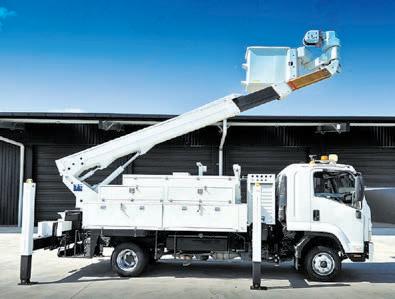


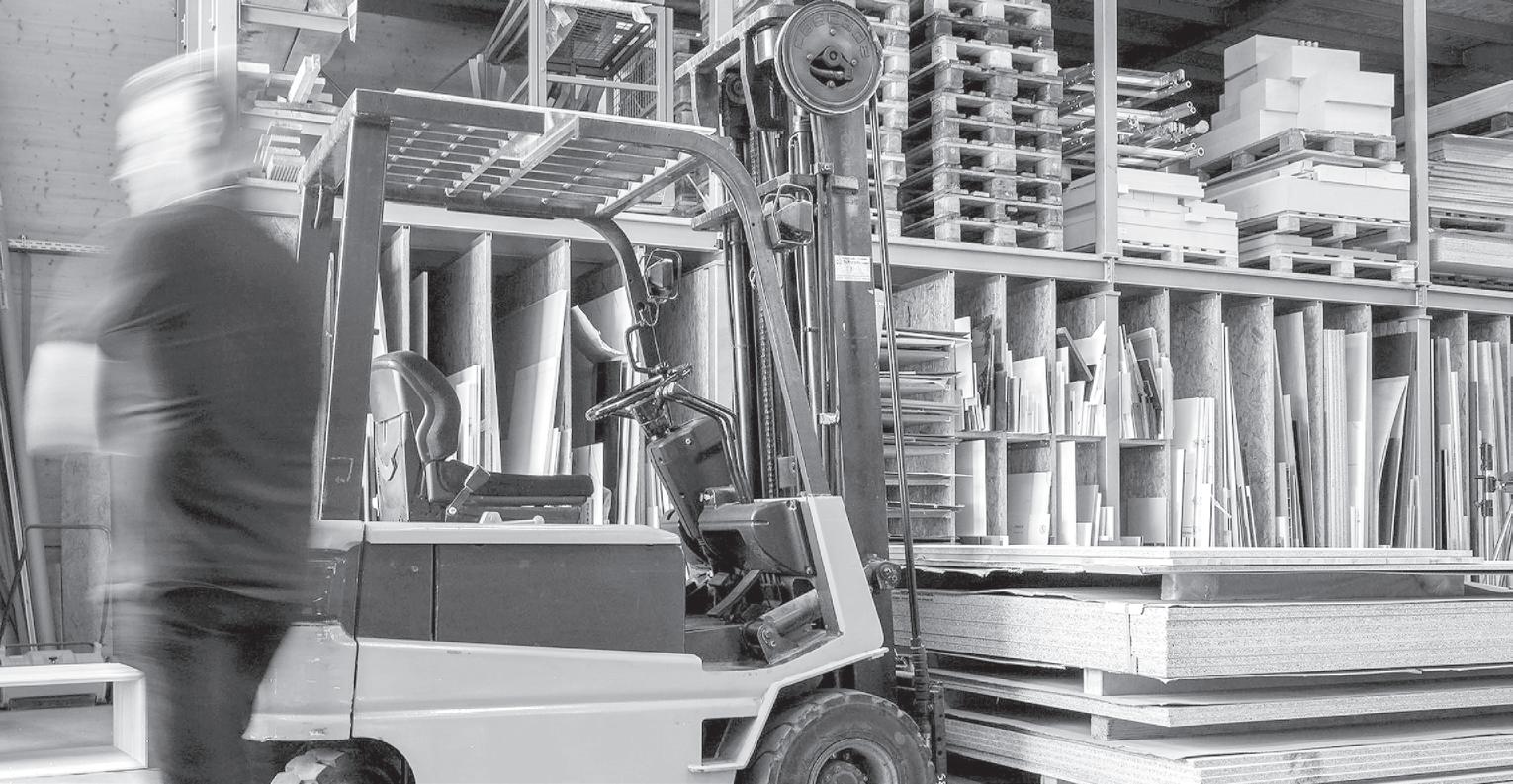

by Andy Bryenton
The small crossover SUV market is booming, with the popularity of the little compact machines on the rise to the extent
are being supplanted by a dizzying range of alternatives.
Finding one which ticks all the boxes, for both style and substance, can seem a daunting task, especially when this segment is so varied. Allow us to direct your attention, then, to something out of the ordinary doing just that — Mahindra’s XUV 3X0.
The theme for this little SUV is absolutely about value for money. What you get as standard, even on the base model, is the stuff which used to be only considered for top-of-the-range European brands. Things like a cooled glove box, dual zone climate control, cameras which activate to show a wide-angle view of the side of the car when you turn on the indicator, hill descent control and wireless phone charger are all stock standard.
So, too, is a multi-speaker surround sound system by Harman Kardon with a dedicated subwoofer, a massive central touch screen, automatic emergency braking, adaptive cruise, traffic sign recognition and automatic highbeam lights.
It doesn’t look bad, either. A lot of smaller SUVs adopt a cookie-cutter shape and style, but the XUV 3XO is distinctive. We love the optional mag wheels, which come on the fully-loaded model, and the distinctive red ‘laser beam’ tail lights, the lines that break up the side profile and




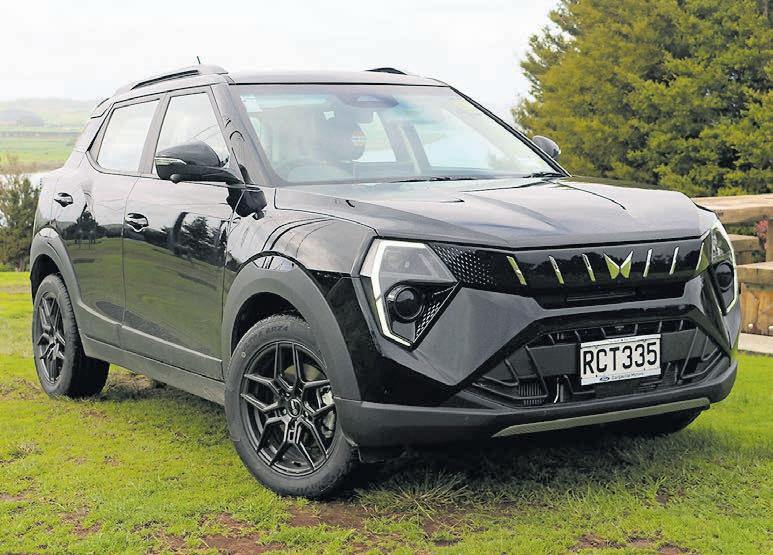
the black crystal-cut effect on the front end. It’s striking, in a field of designs that appear anodyne by comparison.
The second best reason to consider this new Mahindra is its economical but punchy 1.2-litre, three-cylinder turbo engine. It sips petrol but delivers 200Nm of torque, giving the XUV 3XO a smooth and seemingly effortless ride. It’s
mated with a six-speed torque-converter automatic, not a CVT, and comes with three selectable driving modes and three steering modes as well.
The top reason to look at this surprising little car, however, is the price. At $32,000 for the upscaled version we tested, the
XUV is less expensive brand new, with a seven-year warranty, than second-hand versions of some of its less well-appointed competitors. With those figures, it’s well worth taking one for a spin, and seeing if you can work out just how they worked this act of magic.



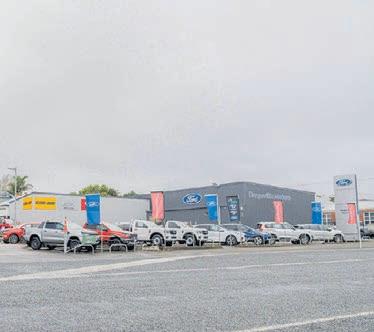



















“Proud to stand beside our community and support Daffodil Day”






























Ph: 09 406 0087 admin@mangonuihaulage.co.nz www.mangonuihaulage.co.nz








“Proud to stand beside our community and support Daffodil Day”






Ph 09 432 0429 24-28 The Centre Waipu






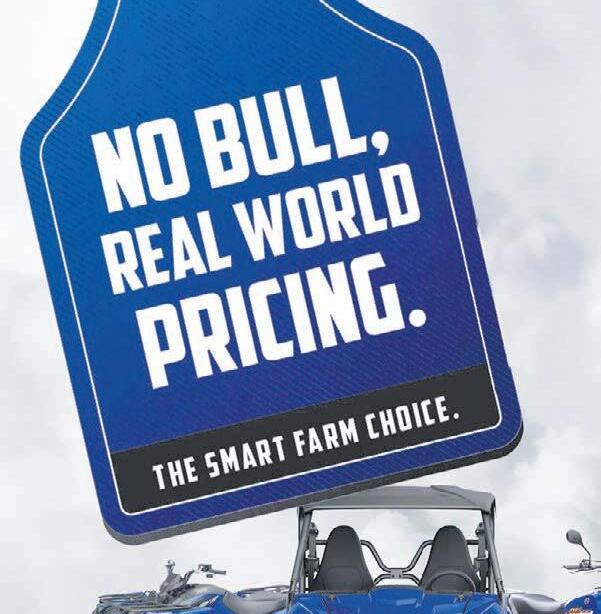

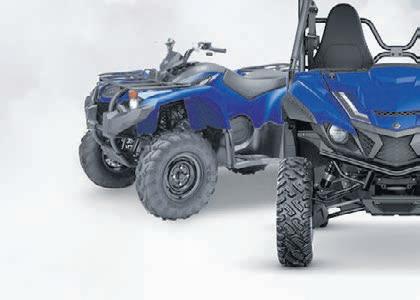












by Andy Bryenton
The iF Design Awards have been handed out for 2025, marking the pinnacle of aesthetic achievement in a wide range of
including the automotive world.
Two of the winners in this category point to an interesting divergence in auto design, and highlight the way in which traditional designers are being matched by up-and-coming new rivals.
In the corner of new contenders with everything to prove we have the GAC group, out of Guangzhou, China. Their award-winning effort is the GAC ERA, an SUV with doors like a 1963 Lincoln and seats that can rearrange from a standard sports utility configuration into a kind of mobile lounge room. The ERA even has its own stow-away coffee table to complement its plush, revolving pilot’s chairs. Open up those massive doors and the entire mobile living room is open to the air.
Taking a stand for traditional design is Pininfarina, the Italian company responsible for some of the most breathtaking and expensive supercars of all time. For 2025, they swept the iF Design Awards with the literal Batmobile; their bespoke, topless electric supercar, the B95.
Why is this ultra-stylised, coachbuilt track rocket associated with the Caped Crusader? Moreover, because Pininfarina made a special Gotham Edition, specially designed for Bruce Wayne himself.
Judges called it the ultimate open-top driving experience.
However, the winner that Kiwi customers will be most keen to embrace comes from a different design discipline altogether. The Valtra S Series tractors have already performed well in the Tractor of the Year competition, and now they’ve been feted for their excellent, driverfocussed design which makes a hard day’s work in the cab easier to manage.
“We’re delighted that once again, the S Series demonstrates its exceptional farmer-focussed design with this prestigious iF Design Award. Following the completion of our new CVT transmission facility, the S Series is 100 per cent built in Finland. Farmers and contractors can get exactly the machine they need for their demanding large-scale smart farming businesses,” said Valtra vice-president Matti Tiitinen.
It’s easy to applaud innovative hydrogen electric SUVs that act as a moving living room or supercars designed for superheroes. However, the importance of Valtra’s design input into making the S Series safer, more comfortable and more intuitive to operate
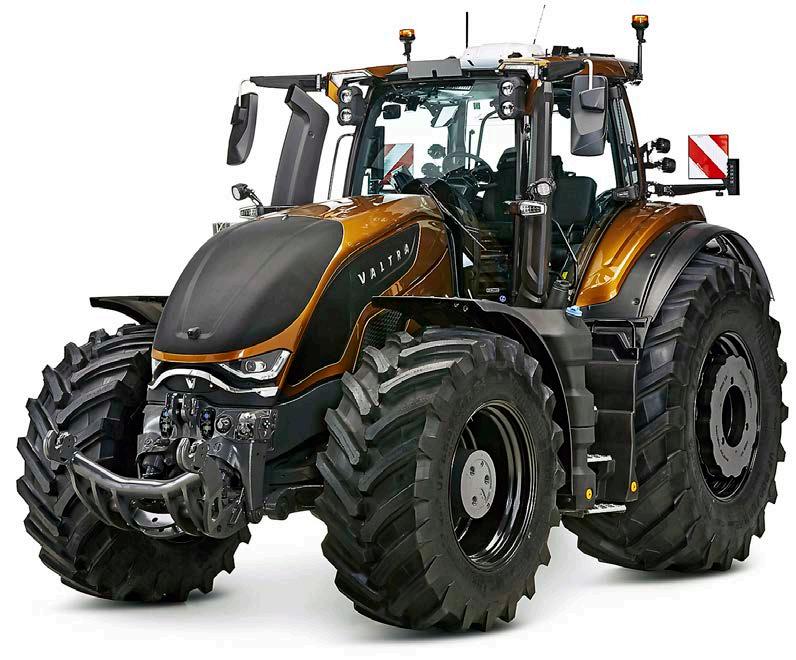
will come in a better bottom line for farmers who adopt it, and that flows on to a stronger rural economy. Especially when competitors, as they inevitably do
in a vigorous market, take note of what’s pushing Valtra to the top of the awards podium, and make similar innovations of their own.

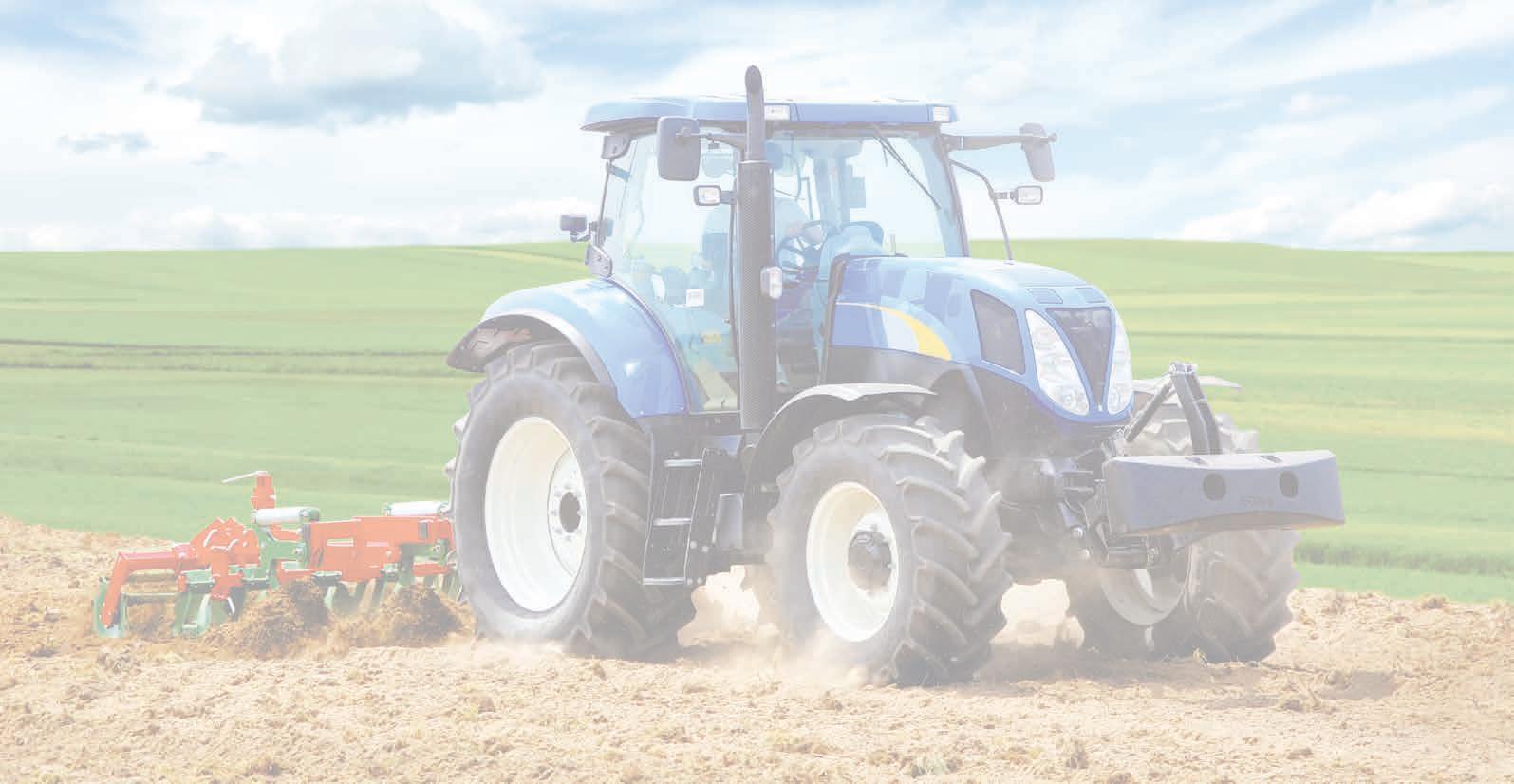


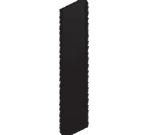



























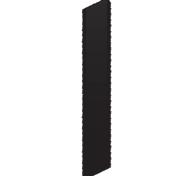







































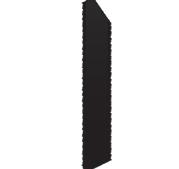
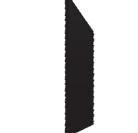
by Andy Bryenton and Konrad Philips
This is the time of year when many farmers wish for a side-by-side with a roof and windscreen to take the pain out of icy rain, and the terrain-conquering stability and grip to deal with winter mud.
However, most don’t want a full-sized ute either. A middle ground between an ATV quad and a big, flat-decked hauler is a niche that’s in demand, and Honda’s Pioneer 520 could have it covered.
Measuring just 1.8 metres tall and with a footprint of 2.6 metres by 1.2 metres, the smallest of the Pioneer family can get through tight spots which other, larger machines might not be able to. Weighing in at less than 500kg, you might feel guilty for having a pie before saddling up this very light machine; the upside of this low weight is that the Pioneer 520 can traverse muddy and damp fields without leaving extensive tyre damage. It’s also going to use less fuel than a beefier, heavier alternative.
Despite its lightweight frame, the Pioneer 520 is tough. One of the big motivators for farmers in choosing a side-by-side is safety, and this Honda is no exception. Roll-up side nets, threepoint safety belts and a rigid roll cage add confidence, as does an advanced suspension setup.
The smallest pioneer has a 20cm ride height, with double-wishbones front and rear for nimble performance. There’s disc brakes all round, and while you might want to shoe this Honda with more aggressive

rubber for the worst of winter’s mud, it’s got ample grip even with its factory tyres.
Under the hood (or in this case, mounted laterally) the Pioneer’s 518cc single-cylinder, liquid-cooled, fourstroke engine produces a reported 29 horsepower; not enough to set the farm on fire, but then again, this machine measures performance in hard work rather than quarter miles. For versatility,
to narrow trails and tough terrain, and maximum band for your fuel dollar, the Pioneer delivers. It also helps that you can switch on the fly between manual and auto transmission modes, and equally quickly between four-wheel and twowheel drive.
For a smaller side-by-side the Pioneer 520 can also pull its weight, quite literally. There’s a load capacity on its tipping rear
tray of 204kg, and it can be close to its own weight — 450kg. For many jobs around the farm, that’s ample hauling power, and it does it while allowing a passenger to join the driver for those jobs that need an extra pair of hands.
Many rural workers will know and respect the 520cc quad bike range made by Honda; this evolution of the brand provides the same reliability in a package which offers not just a roof over your head, but a lot more versatility.

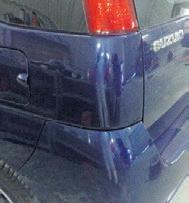


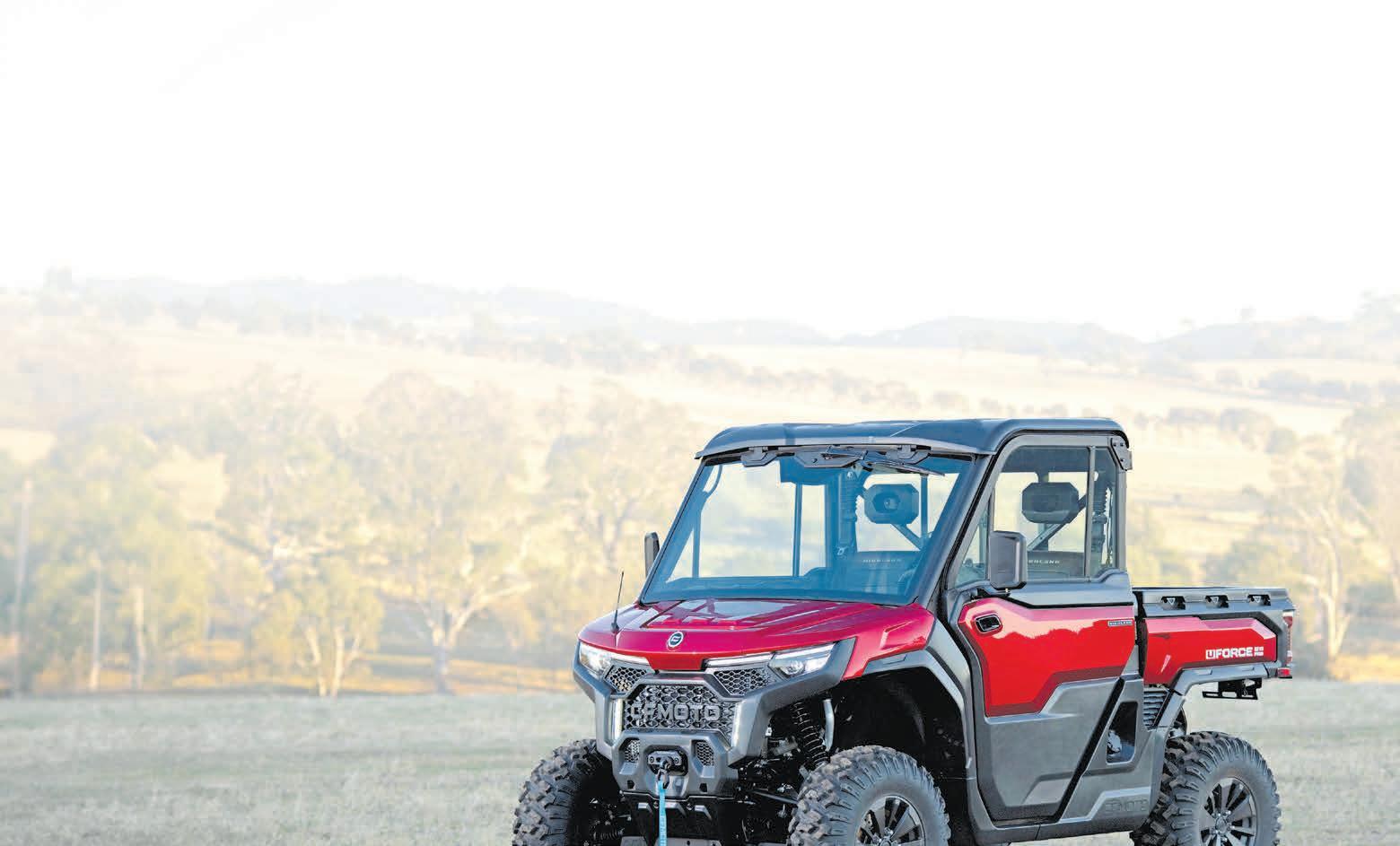












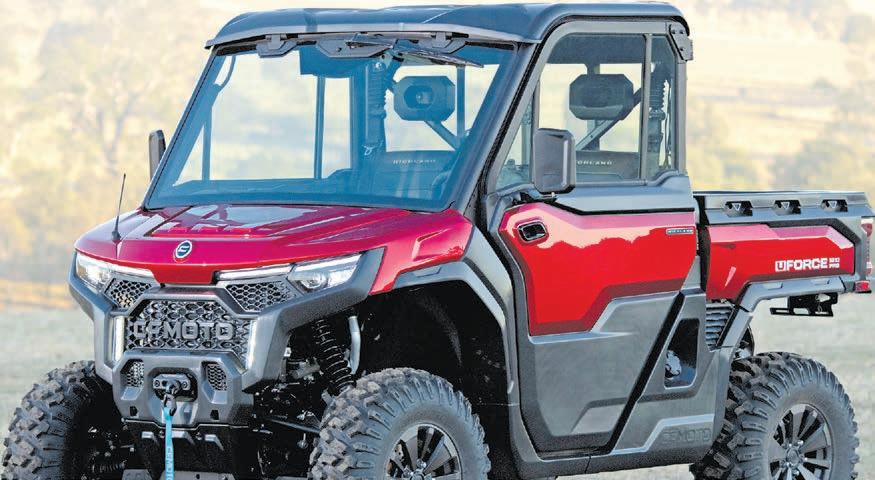







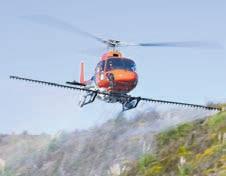


FOR SALE
ATV MATS from $89 — Come in & see us at Rouse Motorcycles, King Street, Hikurangi. Ph 0800 963 636. www.atvtyres.co.nz.
ATV SAFETY HELMETS — from $119 accessories from $15. The law has changed! Have you got yours? Come & see us at Rouse Motorcycles, King Street, Hikurangi. Ph 0800 963 636. www.atvtyres.co.nz. Subject to availability.
HERITAGE APPLE TREES — Hardy root stocks — Diversify your Farm with an Orchard pack 6 trees for $220 www.tastytrees.co.nz, call 09 408 5443 or text 027 346 7645.
NEW YAMAHA FARM ATVs — 5.9% interest & 3 year warranty. Only at Rouse Motorcycles, King Street, Hikurangi — phone 0800 963 636 & Yamaha MC Whangarei. Ph 09 438 0804.










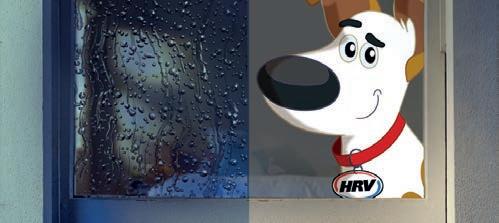




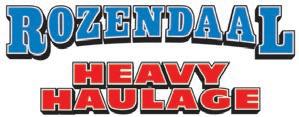
SERVICES SEED POTATOES/GARLIC, New Seasons, FERTILISER – Organic Blood & Bone, Citrus, General plus more from Northland Seed, Okara Drive, Whangarei. Phone
































